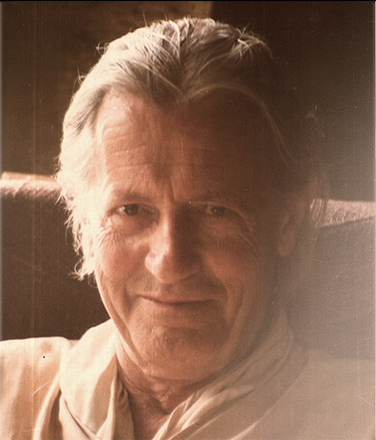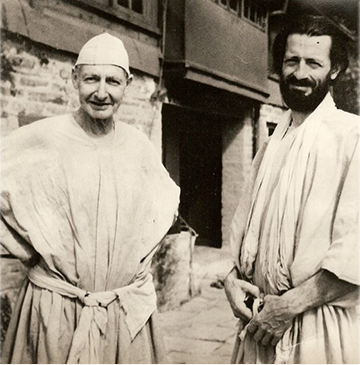Sri Madhava Ashish (1920-1997) – Ashishda to his friends and pupils – was born in Edinburgh, Scotland, and christened Alexander Phipps. He went to Sherborne, a well-known English public school, and then studied aeronautical engineering at Chelsea College of Engineering in London.
When the Second World War broke out, he was posted to India as an aircraft engineer, repairing Spitfires at Dum-Dum, Calcutta. After the war ended, instead of going back to the UK, he decided to use his four months’ leave to travel in India. He went to see the great sage Ramana Maharshi at Tiruvannamalai; the experience proved utterly overwhelming and confirmed that he would make the inner quest the aim of his life.
His search led him to his Guru, Sri Krishna Prem. Twenty years of intense inner work ensued, under his guidance and that of Moti Rani, the charismatic daughter of Yashoda Ma. During this time ‘it slowly became clear that Sri Krishna Prem was no longer a seeker but one who had found’ (writes Sri Madhava Ashish in the Preface to Man, the Measure of All Things). With characteristic humility, though, both men would refer to themselves as ‘pupil-teachers’. After about twenty years, Sri Krishna Prem named him his successor.
During those years, ‘the rigid framework of orthodox Hindu discipline’ was widened to become a teaching that spoke directly to a later generation of seekers who responded to a ‘less mythological, more direct mode than the strictly religious approaches provided for’ (as Sri Madhava Ashish writes in the Foreword to Initiation Into Yoga).



